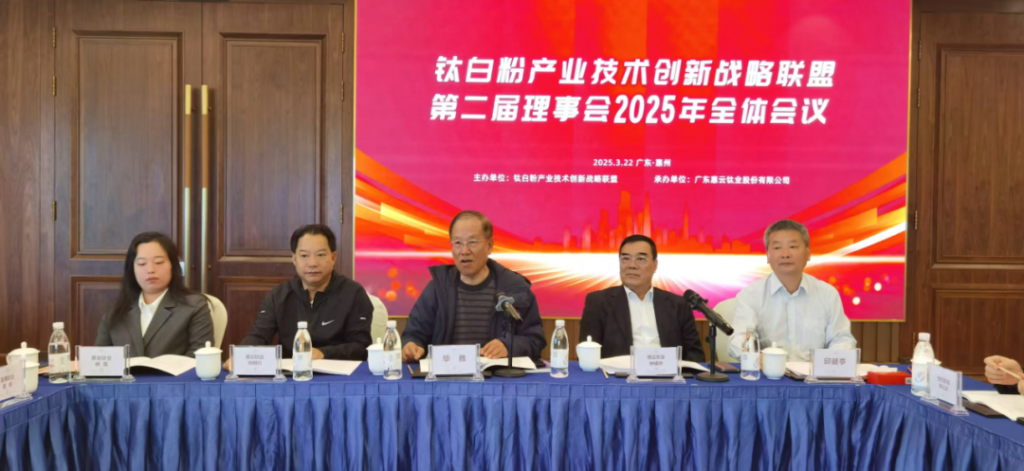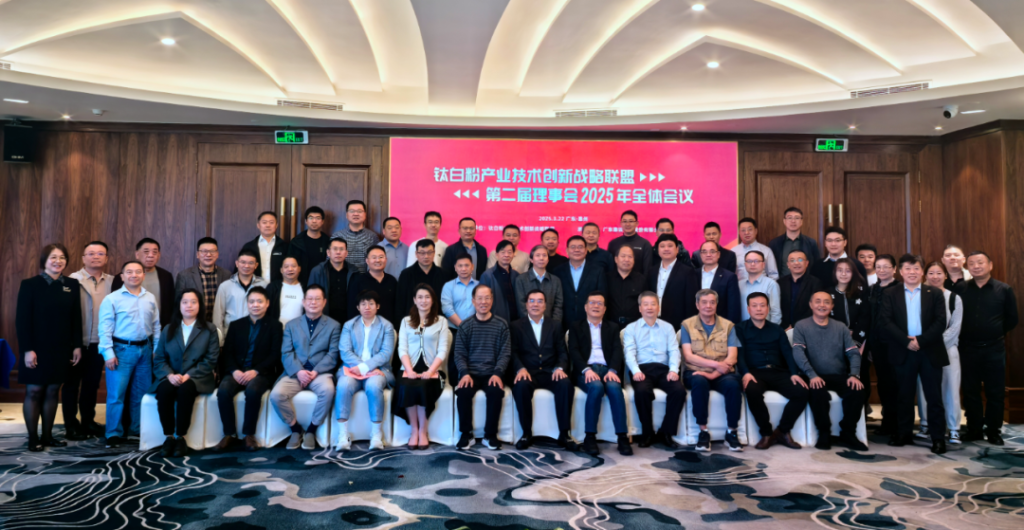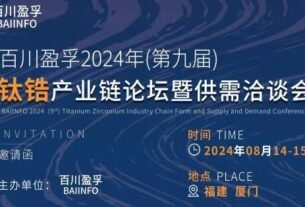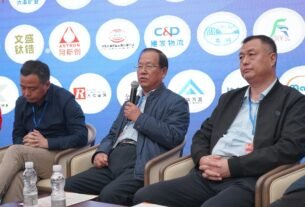On March 22, the Second Council Meeting of the Titanium Dioxide Industry Technology Innovation Strategic Alliance for 2025 was held in Huizhou, Guangdong. Experts in the titanium dioxide industry deeply discussed topics such as the significant increase in titanium dioxide production capacity, collaborative development between upstream and downstream sectors, and innovation-driven new quality productivity, offering insights for addressing the “involution” competition in the industry.

Bi Sheng, Secretary-General of the Titanium Dioxide Alliance, pointed out that the current production capacity and output of titanium dioxide continue to grow, with further concentration of capacity. Meanwhile, as manufacturers expand and the new energy battery materials industry emerges, tight raw material supplies and market imbalances are inevitable, making supply-side structural reforms urgent. Regarding the “involution” competition in the titanium dioxide market, Bi emphasized the need to strengthen industry self-discipline, promote quality enhancement and efficiency, accelerate the research and development of high-end products, narrow the gap with international titanium dioxide products, and avoid homogeneous competition.

“In recent years, with continuous capacity expansion, titanium dioxide companies have been lowering prices to maintain sales, leading to over a $1,000 difference in the average import and export price per ton of titanium dioxide in China last year. Currently, raw material prices are rising, and the entire industry may face losses. It is crucial to adopt a multi-faceted approach to eliminate ‘involution’ competition and help the industry emerge from its low point,” stated Yin Lihua, Executive Director and General Manager of Longbai Sichuan Titanium Industry Co., Ltd. He suggested fully leveraging the guiding role of alliances and associations to facilitate industry collaboration, strengthen self-discipline, abandon low-price competition, and protect the overall interests of the industry. Specifically, titanium dioxide companies should promote digital transformation, achieve cost reduction and efficiency through automated and continuous production, increase research and development investment, rely on industry-academia-research collaboration to overcome technical bottlenecks, enhance product quality and added value, and capture high-end domestic and international markets. They should also integrate the upstream and downstream industrial chains to achieve collaborative development, strengthen energy conservation and emission reduction, comprehensively utilize waste by-products, develop a circular economy, and enhance the industry’s sustainable development capabilities.

Yang Baoxiang, President of the Panzhihua Vanadium-Titanium Industry Association, believes that the severe “involution” in the titanium dioxide industry is an inevitable result of asymmetric industrial factors, market uncertainties, and the industry’s capacity to support economic and social development as well as high-quality development requirements. In the face of segmented, differentiated, and layered markets for titanium dioxide applications, the industry should actively engage in emerging fields such as new materials, new equipment, and new energy, comprehensively enhancing the application value of titanium dioxide. The focus should be on leading with new quality productivity, empowering with green, intelligent, and digital initiatives, and achieving lean production. Furthermore, there should be a strong emphasis on technological innovation to break through key technologies, explore clean production, ultra-low emissions, industrial restructuring, and cluster development models. Typical titanium dioxide enterprises should be guided through a grading system to develop horizontal, vertical, and collaborative industrial chains, improving resource and energy utilization efficiency.
Gao Ling, Executive Director and General Manager of Nanjing Titanium Dioxide Chemical Co., Ltd., noted that the current “involution” situation in the domestic titanium dioxide industry has evolved from a “ranking competition” to an “elimination competition,” resulting in intense market competition and severely squeezed profit margins for companies. Therefore, enterprises must strengthen self-discipline, promote technological innovation and green production. On one hand, they should deepen energy and resource consumption management and recycling to achieve energy savings and pollution reduction, developing a green circular economy. On the other hand, they need to accelerate quality improvement, benchmark against foreign brands, increase research and development of high-performance, high-value-added products, and enhance core competitiveness.

“To prevent ‘involution,’ it starts with me,” said Bi Xinling, Executive Deputy General Manager of Shandong Jinhai Titanium Industry Resource Technology Co., Ltd., sharing their experience. Since 2023, the company has intensified efforts in new product development, focusing on plastic-grade products, ink-grade products, and high-weather-resistant products to promote product diversification. To achieve cost reduction and efficiency, the company has undertaken technological upgrades on high-energy-consuming production equipment, improving overall system yield while reducing consumption of raw materials and energy, thereby enhancing competitiveness.




